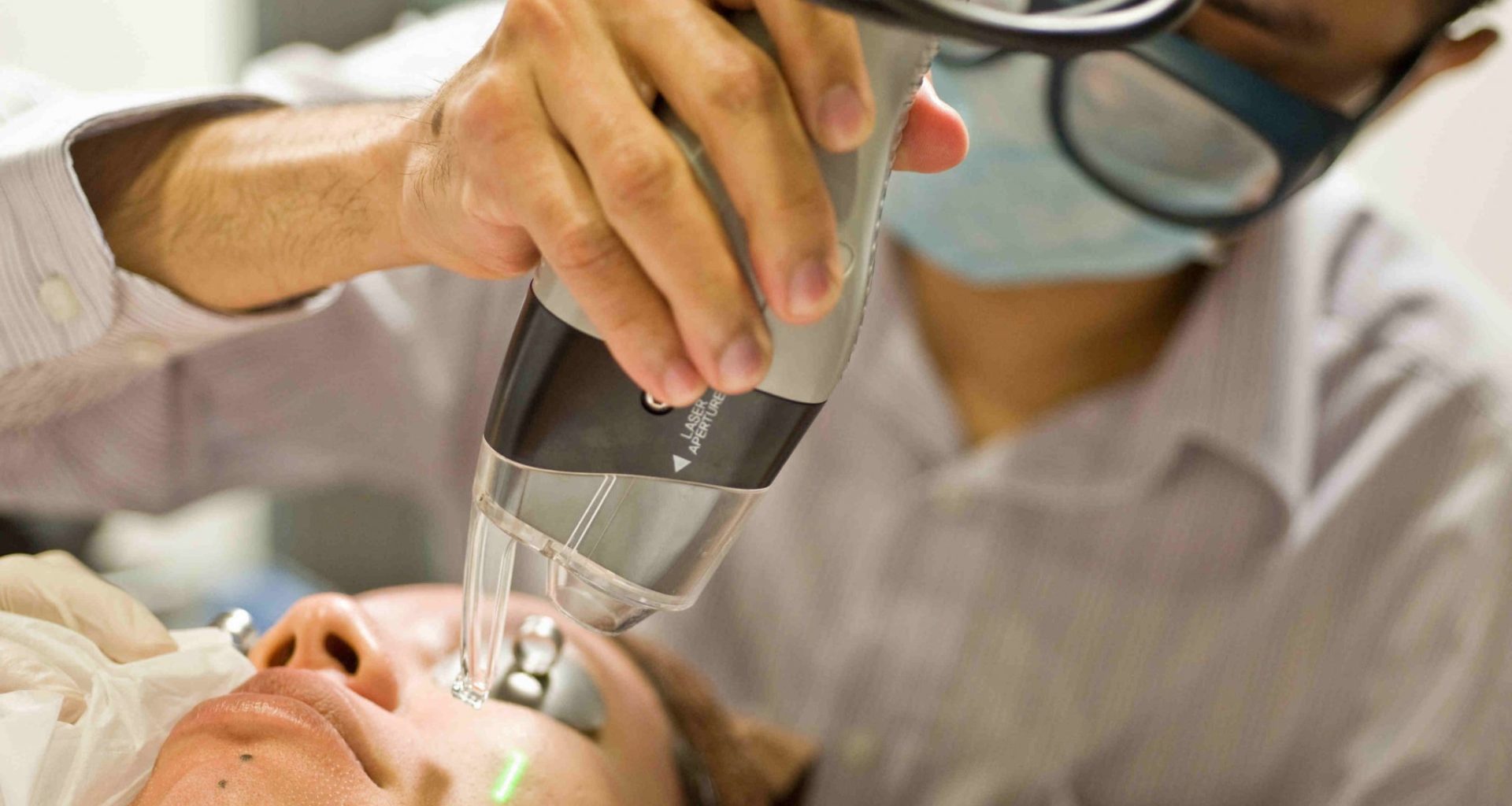Jedis aren’t the only ones who wield lasers as dermatologists use the same technology when dealing with tattoos, lines, and other skin imperfections. Can this actually solve all your skin problems?
With the laser’s versatility and fast results, where a treatment can last from 5 to 30 minutes, it has been used as often as Botox. According to Robert Anolik, who is a dermatologic surgeon based in New York City, laser treatment is one of the fastest growing services being offered today. As a matter of fact, according to the American Society for Dermatologic Surgery there have been 2 million treatments conducted in 2012 with the numbers growing at a fast pace. What can lasers do and do not do for you? Read on.
How Do Lasers Work
Light amplification by stimulated emission of radiation, also known as Laser, is a type of device that directs light into specific areas, according to Tina Alster, the Washington Institute of Dermatologic Laser Surgery director and dermatologist based in Washington, D.C. She further stated that for dermatologists, laser is used to treat something specific in the skin like pigment or water. Adam Kolker, a plastic surgeon from New York City, said that laser creates an injury that is controlled so the body will be forced to start the process of healing. The cells near the affected area are stimulated in order to repair the damaged area by boosting cell and collagen production which results to better looking skin.
There are dozens of lasers that have been developed over the years and they mostly fall under two categories which are traditional and the other is fractional. Fractional is further divided into two and these are nonablative, where the skin’s surface remains intact, and ablative, where the skin may appear abraded.
In traditional laser, the light is concentrated in one area while in fractional laser; multiple beams are emitted to allow minuscule amounts to go deeper much like the pixilation in digital imaging according to Roy Geronemus who is a New York City dermatologic surgeon. Also, recovery is faster and less painful for each treatment session. However, you are required to have several sessions to get the desired results in fractional laser treatment which is one of the reasons why most dermatologists recommend traditional laser.
What is Used for What?
This depends on the skin’s tone and texture. However, here are some guidelines to keep in mind.
• Issue: Facial redness, (red) vascular birthmarks, blood vessels that are broken, and spider veins.
Options: Lasers, like V-Beam Pulsed Dye, aim to eliminate the blood cells’ haemoglobin which can break the blood vessels. Capillaries, including, small blood vessels, can be treated in one session while larger veins, rosacea, including port-wine stains which is a kind of birthmark, need several sessions. The results of the treatment may not last for a long time and may need occasional touch ups.
Downtime: For rosacea, capillaries, and veins, there may be no downtime, bruising, or redness. For birthmarks, however, you might experience crusting and redness for a couple of days.
Cost: For veins in the leg, the cost ranges from $300 to $1,000 depending on what treatment is used, the cost for a blood vessel that has been isolated is $300 to $700, and for birthmarks, the cost may range from $300 to $2,000. Insurance may cover treatment for birthmarks.
Relief for pain: Use topical cream to numb the area.
• Issue: Acne
Options: Isolaz, which is a device for intense-pulsed-light that puts out broadband light, may not be considered as laser but it has the same function. This device is designed to eliminate bacteria that cause acne particularly when used with oral or topical medication. It is also capable of sucking dirt trapped in the pores. The Smoothbeam nonablative treatment reduces production of oil while at the same time target the oil glands. Several sessions may be required for longer lasting effects.
Downtime: Redness for a few hours.
Cost: For the full face treatment, price may range from $400 to $800.
Relief for pain: Topical cream to numb the pain.
• Issue: Hair
Options: Lasers for defuzzing such as GentleMax and GentleLase aim for the pigment found in the hair strands (it won’t work for white or blonde hair) which can make the result last longer compared to waxing. The results, however, may not last long since hair can grow back in a couple of months. A lot of women require several nonablative laser treatments with 1 to 2 month intervals.
Downtime: Treated area may appear sunburned for several hours.
Cost: The price varies depending on how large the area that needs to be treated. The cost can range from $100 to $1,200.
Relief for pain: Application of numbing topical cream when needed.
• Issue: Tattoos
Options: PicoSure is designed to emit light that targets green and blue ink. According to Paul Friedman, who is a dermatologist with practices in Houston and New York City, this treatment is a big step towards removing tattoos. The bursts emitted from the device do quick work in removing tattoos anywhere in the body. Treatment for a 3-inch tattoo usually lasts for 15 minutes.
Downtime: The area that has been treated may turn white and can crust afterwards.
Cost: The cost depends on the type of laser used as well as size of the tattoo that needs to be removed. Usually the price ranges from $250 to $800.
Relief for pain: Anaesthetic that is injectable or topical cream for numbing.
• Issue: Birthmarks or brown spots
Options: Nonablative fractional lasers, such as Clear + Brilliant and Fraxel Restore Dual, and the traditional or fractional Q-Switched Ruby are designed to target extra melanin that causes spots to appear. According Karyn Grossman, who is a dermatologist based in Santa Monica in California, even a single session can improve the face. The rest of the body may require additional sessions since they tend to scar more and can’t be treated in an aggressive manner. The results of these treatments may be permanent but touch ups is needed from time to time as they can darken when exposed to the sun.
Downtime: Scabs usually form within a few days then fall off in the same week.
Cost: Treating brown spots may cost you around $300 to $2,000 while birthmarks can cost the same with the price based on the size of the area that needs to be treated.
Relief for pain: Numbing cream applied topically.
• Issue: Acne scarring
Options: Fractional nonablative or ablative resurfacing lasers provide improvement from 50 up to 75 percent depending on the depth of the scar within 5 sessions according to Friedman. To get the best results, you will need traditional laser such as Erbium or CO2.
Downtime: Sunburn pink skin for a few days that may be accompanied with swelling or pinpoint bleeding for two weeks.
Cost: Depending on the size of the scar as well as type of laser used, you are looking to spend around $700 to $5,000.
Relief for pain: Numbing cream applied topically for nonablative or traditional treatments. Injectable anaesthetic or painkillers can be taken for ablative treatments.
• Issue: Wrinkles and lines
Options: Dermatologists often use traditional laser treatments like CO2 or Erbium for the more stubborn lines and wrinkles. These treatments aim to heat water under the skin up to the point where it vaporizes the surface skin so that new collagen is produced. However, you will be paying a high price when it comes to wound care and downtime. And it’s because of these reasons that laser surgeons recommend the use of fractional ablative and nonablative treatments. These laser treatments may leave the surface of the skin a bit red but not raw. The same results from traditional treatment can be achieved with several sessions with one month intervals. You can actually go for nonablative laser treatments every month but then treatment should be done every year after the first three sessions. Frederic Bandt, a dermatologist based in Miami and New York City, believes that one or two sessions of fractional ablative treatment in their life.
Downtime: Friedman says that those who underwent fractional ablative treatment tend to experience two to three days of pinpoint bleeding and oozing and up to a week of crusting. Redness will persist for a few weeks. Fractional lasers, whether ablative or nonablative, provide less discomfort and damage compared to their traditional counterparts.
Cost: Resurfacing, whether fractional ablative or traditional, may cost around $2,000 to $5,000, resurfacing that is nonablative will cost $700 to $1,500. The prices tend to change depending on location.
At-Home Lasers
Lasers that have been approved for use by the Food and Drug Administration can provide you with numerous benefits. Although the results may not be the same as the doctors, they still work better compared to tropical creams. You should try Silk’n Face FX at $149 for treating facial sagging and spots. For facial lines that are smooth, go for Tria Age-Defying Laser which costs around $495 at triabeauty.com. For hair removal, choose Remington I-Light Pro which is priced at $250 at remingtonproducts.com.
Sure Strategies
Follow these simple tips to ensure a great laser treatment experience:
• You shouldn’t schedule a treatment after you get a tan as this can cause scarring and blistering.
• Inform your doctor if you have a history of cold sores since the heat coming from the laser can cause an outbreak. You’ll be given a prescription for antiviral two days prior to treatment.
• Add an extra pillow when you sleep the first night after your treatment.
• Choose a laser practitioner who is a plastic surgery or dermatology board-certified. You can look for one at plasticsurgery.org or asds.net.
• Tina Alster, a dermatologist, recommends that you avoid getting treatment a day before an engagement particularly around the face and chest areas. The results may vary from one person to the next.
• You should avoid taking vitamin E, aspirin, and ibuprofen two weeks before your treatment as they may cause you to bruise.
• Alster suggests that you stay away from the sun or wear sunscreen with higher SPF to prevent damage from the sun. Hyperpigmentation may occur even with ambient exposure to the sun.













